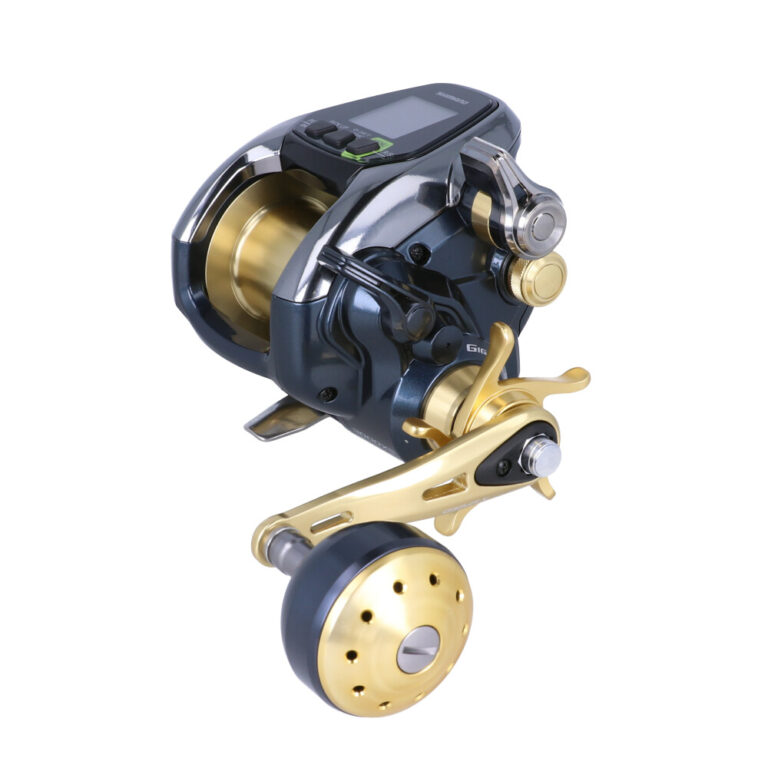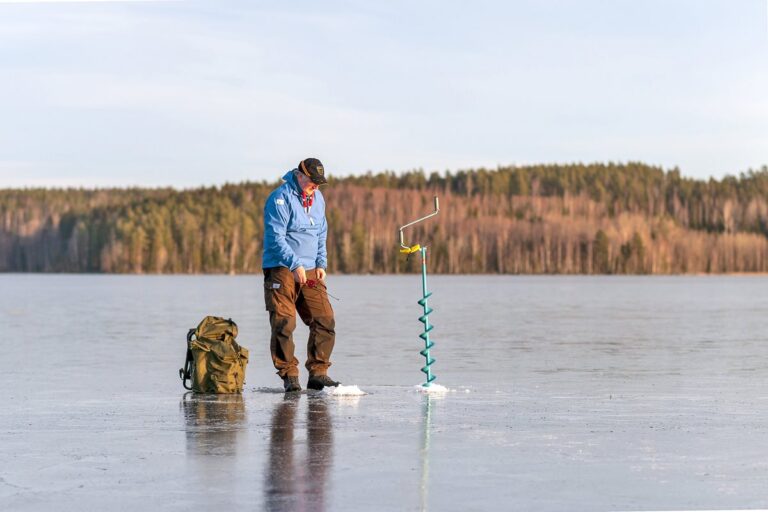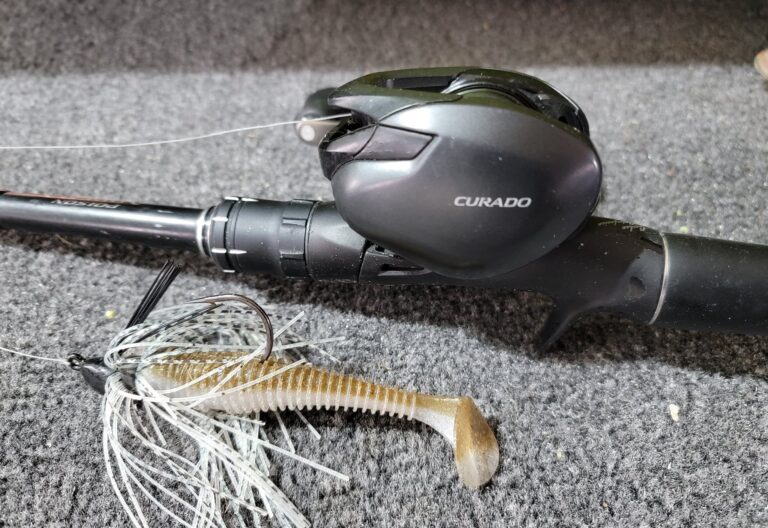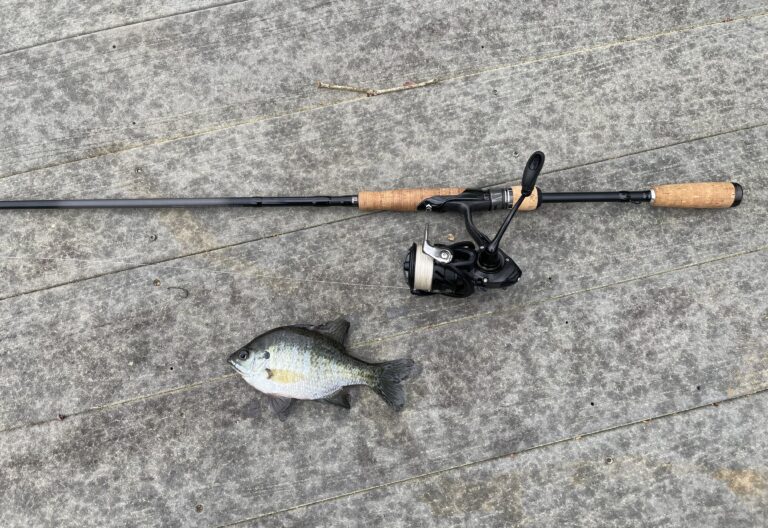To select the right power and action for a spinning rod, consider your target species and fishing conditions. This will help determine the appropriate rod power, which refers to the rod’s strength and ability to handle heavy loads, and the action, which describes how much the rod bends and where it flexes along its length.
Match the power and action to your specific needs for optimal performance and success on the water. Selecting the right power and action for a spinning rod is essential for successful fishing. Whether you’re targeting small panfish or battling big game fish, understanding these two factors can greatly enhance your angling experience.
Choosing the correct power, which refers to the rod’s ability to handle heavy loads, and action, which determines how much and where the rod bends, will help you effectively control your lures and land fish. By matching the power and action to the fishing conditions and target species, you can achieve greater accuracy, sensitivity, and strength in your rod. We will explore the factors to consider when selecting the power and action that best suits your fishing needs.
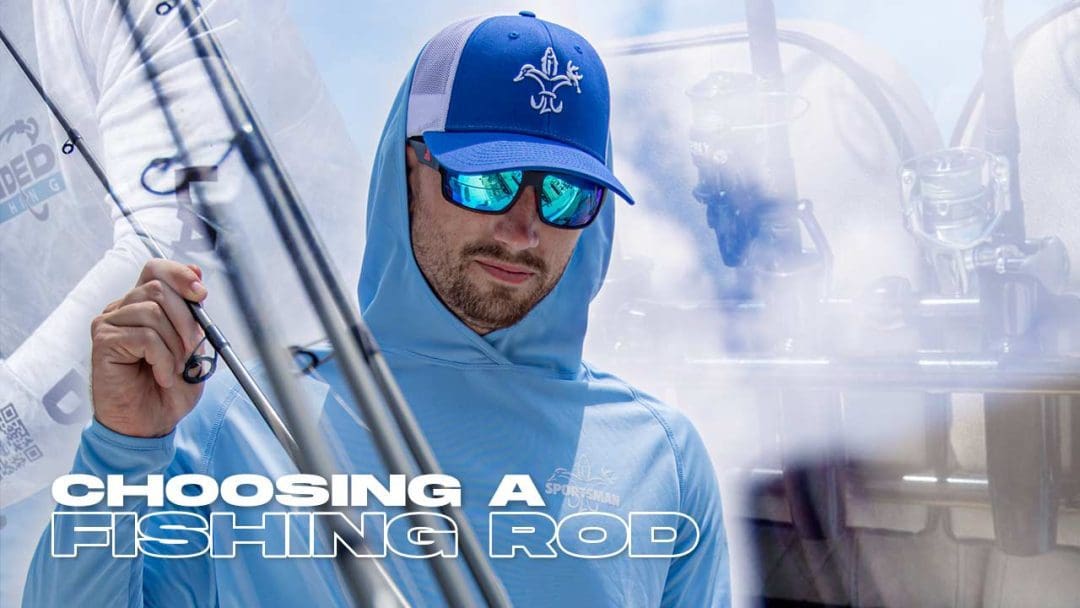
Credit: landedfishing.com
Understanding The Essentials Of Spinning Rod Power
When it comes to selecting the right spinning rod for your fishing endeavors, understanding the power of the rod is crucial. The term “power” refers to the rod’s ability to handle different line weights and lure sizes, as well as its strength when fighting fish.
Let’s delve into the key aspects of spinning rod power that you need to consider before making a decision.
What Is Spinning Rod Power?
Spinning rod power is classified into different categories, ranging from ultralight to heavy. Each power rating indicates the rod’s overall strength, flexibility, and the size of fish it can handle. Here are the main power classifications:
- Ultralight power: Designed for light-line fishing, this power is ideal for finesse techniques and targeting smaller fish species.
- Light power: Suitable for finesse fishing and targeting small to medium-sized fish in open water.
- Medium power: A versatile option that allows you to fish with a wider range of lures and target medium-sized fish in various fishing scenarios.
- Heavy power: Designed to tackle larger fish species and handle heavy cover conditions.
Why Is Power Important When Choosing A Spinning Rod?
Selecting the appropriate power for your spinning rod is vital for several reasons:
- Casting distance and accuracy: Choosing the right power ensures that you can cast the desired distance and with precision.
- Fish handling: Matching the rod power to your target species helps you efficiently handle and control the fish during the fight.
- Lure control: The power of your spinning rod affects how well you can control the movement of your lure.
- Sensitivity: Power has an impact on the sensitivity of the rod, affecting your ability to detect subtle bites and movements.
Factors To Consider When Determining The Right Power For Your Needs
Several factors come into play when determining the ideal spinning rod power for your needs:
Fishing Technique And Target Species
Different fishing techniques, such as finesse fishing, require specific power ratings. Likewise, the size and strength of your target species play a significant role in determining the power you require. Consider the following:
- Ultralight or light power is suitable for finesse fishing techniques and targeting smaller fish.
- Medium power is a versatile option that can handle a wide range of fishing techniques and medium-sized fish.
- Heavy power is necessary for targeting large fish species and fishing in heavy cover.
Line Strength And Lure Weight Compatibility
The power of a spinning rod should align with the line strength and lure weight you plan to use. Ensure that the rod’s power is compatible with the line rating and lure weight range you intend to fish with.
Personal Preference And Fishing Experience
Your personal preference and level of fishing experience also come into play when selecting spinning rod power. Keep in mind the fishing scenarios you frequently encounter and choose a power that complements your skills and preferences.
Expert Tips For Matching Spinning Rod Power To Specific Fishing Scenarios
Now that you understand the essentials of spinning rod power, here are some expert tips for matching power to specific fishing scenarios:
Light Power For Finesse Fishing And Small Game
- Ideal for finesse techniques such as drop shot, ned rigs, and small jigs.
- Suitable for targeting small fish species like panfish, trout, and bass in open water.
- Provides a delicate presentation and enhances sensitivity for detecting light bites.
Medium Power For Versatile Use And Medium-Sized Fish
- Offers flexibility for a wide range of fishing techniques, including using spinnerbaits, crankbaits, and topwater lures.
- Suitable for medium-sized fish species like bass, walleye, and pike.
- Strikes a balance between sensitivity and power, allowing for better control during the fight.
Heavy Power For Handling Large Fish And Heavy Cover
- Designed to handle big fish species such as musky, salmon, and catfish.
- Suitable for fishing in heavy cover environments like dense vegetation or rocky structures.
- Provides superior strength and control, enabling anglers to successfully land large, hard-fighting fish.
Understanding the essentials of spinning rod power is crucial for selecting the right rod for your fishing needs. Consider the fishing techniques you employ, the target species you seek, and your personal preferences when determining the ideal rod power. By matching power to specific fishing scenarios, you can enhance your angling experience and increase your chances of landing that prized catch.
Decoding The Different Spinning Rod Actions
When it comes to selecting the right spinning rod, understanding the concept of rod action is crucial. The action of a spinning rod refers to how much the rod bends from the tip to the handle when pressure is applied.
This bending action directly affects the rod’s power and flexibility, which in turn affects your fishing performance.
What Is Spinning Rod Action?
- Spinning rod action refers to how much the rod bends under pressure, from the tip to the handle.
- The three main types of spinning rod action are slow, medium, and fast.
How Does Action Affect Fishing Performance?
- Action affects the rod’s sensitivity, power, and casting distance.
- It determines how well you can detect bites and feel the movement of your bait or lure.
- Action also influences your ability to cast accurately and set the hook quickly.
Exploring The Range Of Spinning Rod Actions Available
- Spinning rods come in a variety of actions to suit different fishing techniques.
- The range of actions includes slow, medium, fast, and even extra-fast.
Slow Action For Increased Flexibility And Sensitivity
- Slow action spinning rods bend throughout their length, from the tip to the handle, offering increased flexibility.
- They are highly sensitive and ideal for light fishing techniques such as finesse fishing and light line applications.
- Slow action rods allow for precise lure control and gentle presentations.
Medium Action For A Balanced Combination Of Power And Flexibility
- Medium action spinning rods bend about halfway down the length of the rod.
- They provide a good balance between power and flexibility, making them versatile for a wide range of fishing techniques.
- Medium action rods are suitable for various bait sizes and offer a reliable hook-setting power.
Fast Action For Enhanced Casting Distance And Hook-Setting Power
- Fast action spinning rods bend mostly in the tip section, near the top third of the rod.
- They offer increased casting distance, allowing you to reach farther targets.
- Fast action rods provide excellent sensitivity and enhanced hook-setting power.
- These rods are suitable for heavy cover fishing, larger baits, and aggressive fish species.
Analyzing The Relationship Between Spinning Rod Action And Lure Presentation
- The action of your spinning rod plays a crucial role in how your lure moves through the water.
- Slow action rods allow for more fluid and natural lure movements, which can attract finicky fish.
- Medium action rods provide a good compromise, allowing for controlled lure actions and subtle presentations.
- Fast action rods excel in imparting quick and aggressive movements to your lures, making them suitable for power fishing techniques.
Understanding How Action Affects Lure Movement And Sensitivity
- Slow action rods have greater flexibility, allowing the lure to move with a gentle and lifelike action.
- Medium action rods offer a balance between flexibility and control, resulting in precise lure movements.
- Fast action rods provide less flexibility, allowing for quick and sharp movements that can trigger aggressive strikes.
- Action also influences sensitivity, with slower actions enhancing the angler’s ability to detect subtle strikes and movements.
Expert Advice On Selecting The Right Action For Specific Fishing Techniques
- Consider the type of fishing technique you plan to use, the target fish species, and the size of the bait or lure.
- Research specific recommendations for different techniques and adjust your rod selection accordingly.
- Seek advice from experienced anglers or professional guides to gain insights into the best action for your intended fishing style.
Common Misconceptions And Myths About Spinning Rod Action
- Myth: Fast action rods are only suitable for experienced anglers. Truth: while fast action rods require proficiency, they can still be used by beginners and offer advantages in specific situations.
- Myth: Slow action rods are weak and lack power. Truth: slow action rods have a different power distribution, making them suitable for lighter fishing lines and finesse techniques.
- Myth: Medium action is always the best choice. Truth: the best action depends on your fishing technique and target species, so consider the specific requirements of your fishing style.
Remember, selecting the right spinning rod action is essential for optimizing your fishing performance. Take into account your fishing style, target species, and desired lure presentation to choose the perfect spinning rod action that matches your needs.
Finding The Perfect Balance: Matching Power And Action
The Importance Of Finding The Right Balance Between Power And Action
Finding the perfect balance between power and action is crucial when selecting a spinning rod. This combination determines how well the rod performs in different fishing scenarios and can greatly impact your overall fishing experience. By understanding the relationship between power and action, you can ensure that you choose the right rod for your specific needs.
How Power And Action Complement Each Other In Different Fishing Scenarios
Power refers to the rod’s strength and its ability to handle heavy loads, while action refers to the flexibility and responsiveness of the rod. These two factors work hand in hand to determine the rod’s performance in different fishing scenarios.
Here’s a breakdown of how power and action complement each other:
- Heavy power with fast action: This combination is suitable for fishing situations where you need to cast heavy baits or lures and require an immediate response when setting the hook. It offers excellent sensitivity and control while handling larger fish.
- Medium power with moderate action: This versatile combination is ideal for a wide range of fishing techniques. It provides a good balance between sensitivity, flexibility, and power, making it suitable for various fishing scenarios.
- Light power with slow action: Perfect for finesse fishing, this combination offers maximum flexibility and sensitivity. It allows you to detect even the subtlest movements and bites, making it ideal for targeting smaller fish species.
Selecting The Optimal Spinning Rod Power And Action For Different Target Species
Different fish species require different power and action combinations. Here’s a guide to help you choose the optimal spinning rod for your target species:
- Bass and trout: For these freshwater species, a medium power rod with moderate action is generally recommended. It provides the versatility needed to handle the varying sizes and fighting styles of these fish.
- Pike and musky: These larger freshwater predators require a heavy power rod with fast action. The added strength and responsiveness are necessary to handle their size and aggressive nature.
- Redfish and snook: When targeting these saltwater species, a medium to medium-heavy power rod with moderate action is often preferred. It provides the strength and control needed to handle their powerful runs and sudden bursts of speed.
- Tarpon and tuna: These trophy saltwater species demand a heavy power rod with fast action. These rods are designed to handle the immense power and endurance of these fish.
Freshwater Fishing Considerations
When selecting a spinning rod for freshwater fishing, there are a few additional considerations to keep in mind:
- Lake and pond fishing: If you primarily fish in lakes or ponds, a medium power rod with moderate action is a versatile choice that can handle a variety of fishing techniques and species.
- River fishing: In rivers with strong currents or heavy cover, a heavier power rod with fast action may be necessary to provide the strength needed to control fish and navigate challenging conditions.
Saltwater Fishing Considerations
When it comes to saltwater fishing, there are specific factors to consider:
- Saltwater corrosion: Saltwater can be harsh on fishing equipment, so it’s important to choose a rod made from corrosion-resistant materials, such as graphite or fiberglass.
- Fighting power: Saltwater species are known for their powerful runs and relentless fights. A heavy power rod with fast action provides the strength and control necessary to handle these challenging battles.
Expert Tips For Experimenting With Different Power And Action Combinations
- Test before buying: Try casting rods with different power and action combinations to get a feel for their performance. This hands-on approach will give you a better understanding of what works best for your fishing style and target species.
- Consult experienced anglers: Seek advice from experienced anglers who have expertise in fishing the same species or location. Their insights can help guide you in selecting the right power and action combination.
- Consider fishing style: Take into account your preferred fishing techniques. If you enjoy finesse fishing, a lighter power rod with slower action may be more suitable. On the other hand, if you prefer power casting or heavy bait fishing, opt for a heavier power rod with faster action.
Understanding The Potential Trade-Offs When Prioritizing Power Or Action
It’s important to understand that there may be trade-offs when prioritizing power or action in your spinning rod selection. Here are a few things to consider:
- Power over action: Choosing a rod with more power sacrifices some of the flexibility and sensitivity. This can make it more difficult to detect subtle bites or finesse presentations.
- Action over power: Opting for a rod with more action sacrifices some of the rod’s overall strength and lifting power. This can be a disadvantage when dealing with larger or more aggressive fish.
By striking the right balance between power and action, considering your target species and fishing style, and experimenting with different combinations, you can select the optimal spinning rod that enhances your fishing experience and increases your chances of success on the water.
Conclusion
After reading this guide, you should now have a clear understanding of how to select the right power and action for a spinning rod. It’s essential to consider factors such as the type of fishing you’ll be doing, the species you’ll be targeting, and your personal preferences.
Remember, power refers to the rod’s ability to handle different line strengths, while action determines how the rod bends and reacts to pressure. By matching the power and action to your fishing style and target species, you can enhance your chances of success on the water.
Experimenting with different combinations and seeking advice from experienced anglers can also be beneficial. Ultimately, finding the perfect power and action for your spinning rod will enhance your fishing experience and increase your chances of landing that prized catch. So, go ahead and put this knowledge into practice, and make the most out of every fishing trip!

